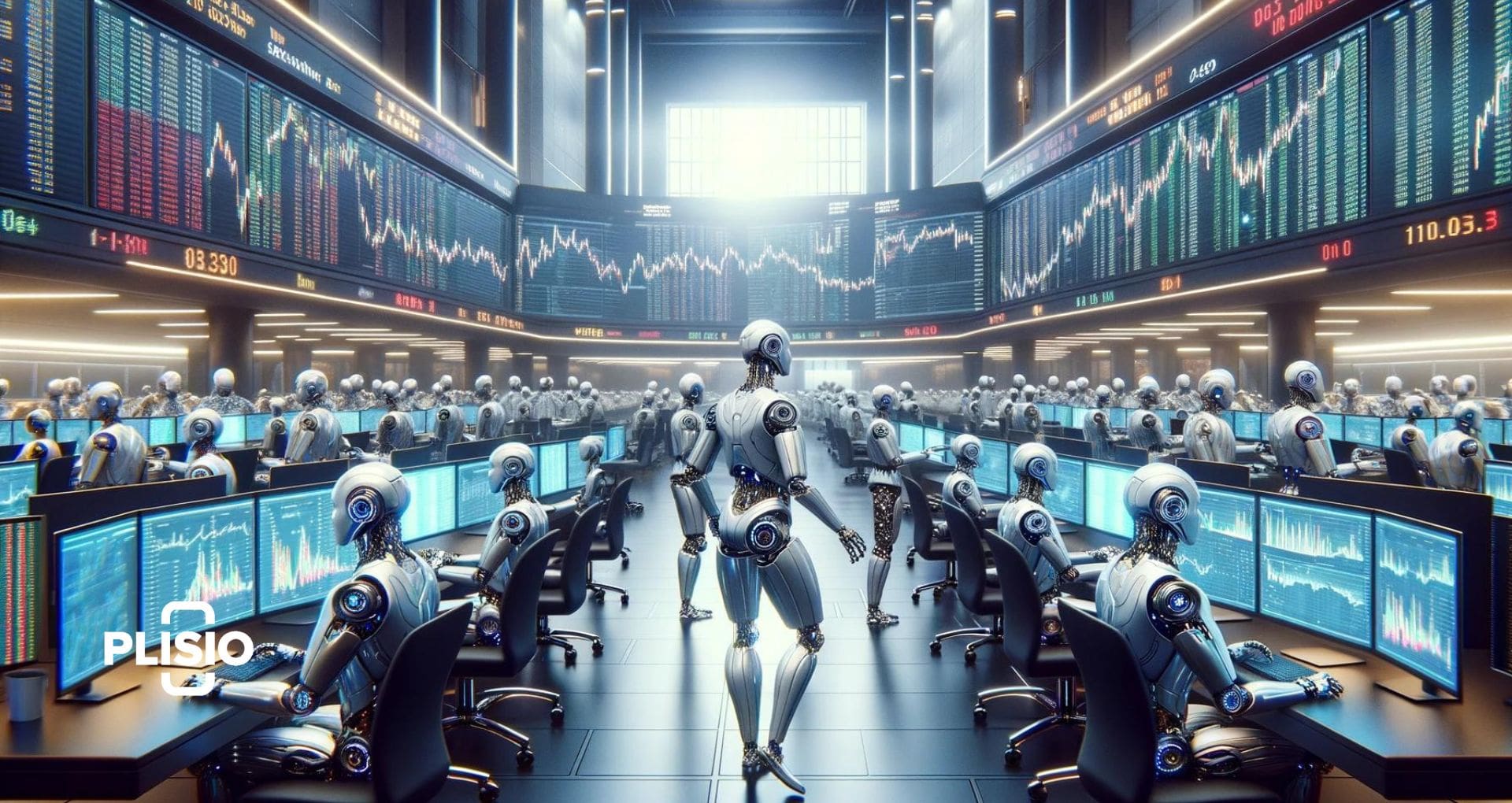The Role of AI in Crypto Trading

AI technology is transforming crypto trading by automating transactions, forecasting market trends, and analyzing sentiment more effectively. As of 2024, advanced AI-driven crypto trading bots are designed to perform transactions not only with greater speed but also with increased precision compared to manual trading.
These bots leverage machine learning algorithms to adapt and respond to market changes swiftly, offering potential benefits in terms of profitability and risk management. However, as AI integration deepens, understanding its limitations and associated risks becomes crucial. It's important for traders to be aware of the potential for market manipulation and the ethical considerations surrounding automated trading systems. Additionally, reliance on AI requires robust security measures to prevent data breaches and ensure the integrity of trading strategies.
A Beginner’s Guide to AI in Crypto Trading
Artificial Intelligence (AI) is increasingly influential in the realm of cryptocurrency trading, enhancing the efficiency and precision of operations. AI excels particularly in algorithmic trading, which employs sophisticated systems to make rapid trading decisions, executing millions of transactions daily. This capability is crucial in the volatile cryptocurrency markets where price fluctuations are swift and significant.
AI-driven trading utilizes specialized programs that operate bots to sift through massive datasets and execute trades. Strategies like arbitrage, which demand an extremely quick response time that surpasses human capabilities, benefit greatly from AI technology. These bots optimize trading processes by analyzing market conditions and reacting instantaneously, thus capitalizing on minute price differences between exchanges.
As of 2024, the integration of AI in crypto trading has also expanded to include predictive analytics, which uses historical data and machine learning to forecast market trends and potential price movements. This advancement not only aids traders in making informed decisions but also mitigates risks by providing deeper insights into market behavior. However, traders should remain cautious of the potential risks, including the reliance on technical indicators that may not account for unforeseen market events or the security vulnerabilities inherent in digital trading platforms.
How AI Crypto Trading Bots Do Shape Market Dynamics
Cryptocurrency trading bots are automated software programs that deploy algorithms to manage trading strategies in the cryptocurrency markets. These strategies may leverage technical indicators, price patterns, market trends, or a blend of these elements. The primary role of these bots is to interface with market platforms, sift through market data, and carry out trades according to established rules.
Designed to optimize the trading process, crypto trading bots minimize human error and perform transactions at speeds unattainable by manual methods. As of 2024, these bots have advanced in their use of machine learning and artificial intelligence to adapt their strategies in real-time, enhancing their ability to predict market movements and react to volatility.
Furthermore, the integration of sentiment analysis tools allows these bots to interpret news and social media trends, potentially giving traders an edge by anticipating market sentiment shifts.
Pros and Cons of Using AI in Crypto Trading
Benefits of AI in Crypto Trading:
- Data Analysis: AI tools can analyze large datasets rapidly, identifying key patterns that may not be visible to human traders.
- Predictive Capabilities: Leveraging historical data, AI can forecast future market trends and price movements, aiding in strategic planning.
- Automated Trading: AI systems can execute trades automatically based on predefined criteria like price movements and technical indicators, facilitating timely transactions.
- Market Sentiment Analysis: These tools can interpret market sentiment by analyzing news feeds and social media, potentially offering traders a competitive edge.
- Efficiency: By automating routine tasks, AI increases trading efficiency, saving time and reducing the likelihood of human error.
Limitations and Risks of AI in Crypto Trading:
- Data Dependency: The accuracy of AI predictions is heavily dependent on the quality of the data used for training the models.
- Error Potential: AI systems are not infallible and can make mistakes, especially if the input data is flawed or incomplete.
- Market Volatility: AI may struggle to predict sudden market changes that haven't been previously observed in the training data.
- Continuous Monitoring Needed: AI tools require regular monitoring and parameter adjustments to stay effective as market conditions change.
- Complacency Risk: Over-reliance on AI can lead to a lack of engagement with the market, potentially missing out on nuanced insights or regulatory changes.
How to Select the Best AI Trading Platform
Selecting the appropriate AI trading platform for cryptocurrency is crucial for optimizing trading strategies. The ideal platform should be reliable, secure, and intuitive, catering to both novice and experienced traders. Key features to look for include comprehensive trading tools such as advanced charting options, a suite of technical analysis tools, and diverse order types to accommodate different trading styles.
Moreover, a good AI trading platform should support a broad spectrum of cryptocurrencies, offering traders the flexibility to diversify their portfolios. It's also essential that the platform includes a powerful API to facilitate seamless integration with various trading bots, enhancing automation and efficiency. As of 2024, additional considerations might include the platform’s compliance with regulatory standards, its ability to provide real-time data and its support for AI-driven predictive analytics, which can give traders an edge by anticipating market movements before they occur.
How to Handle Risk in AI Crypto Trading
Risk management is crucial in AI crypto trading to safeguard investments and minimize potential losses. Traders should implement stop-loss and take-profit orders to manage risks proactively. Diversification of investments across various cryptocurrencies can also help spread risk, reducing the impact of volatility in any single asset.
Staying updated with the latest market trends and significant news events is essential, as these factors can heavily influence the cryptocurrency market. Moreover, maintaining discipline and patience is vital; traders should avoid making hasty decisions driven by short-term market movements.
In addition to these strategies, it's advisable to use risk analysis tools integrated within AI trading platforms. These tools can provide advanced metrics to assess the risk exposure of particular trades or strategies. Implementing algorithmic risk assessment techniques, such as Monte Carlo simulations, can further enhance decision-making by predicting potential outcomes under various market conditions.




